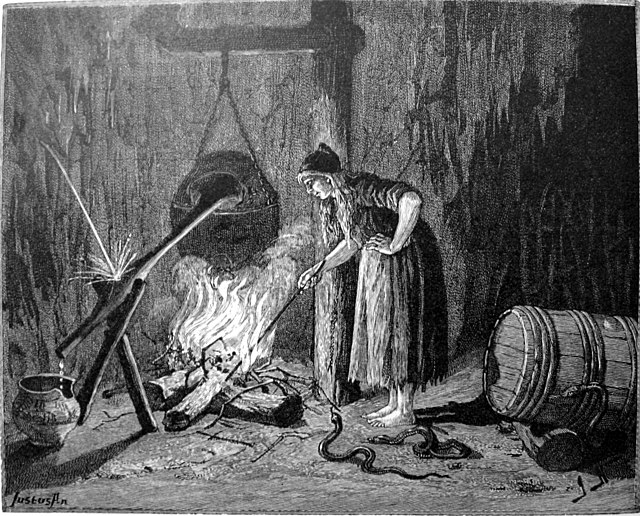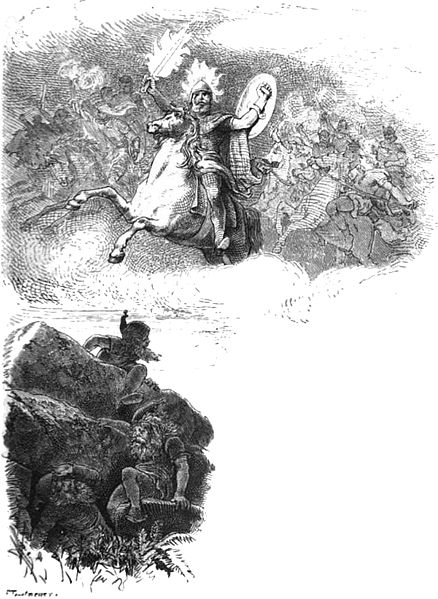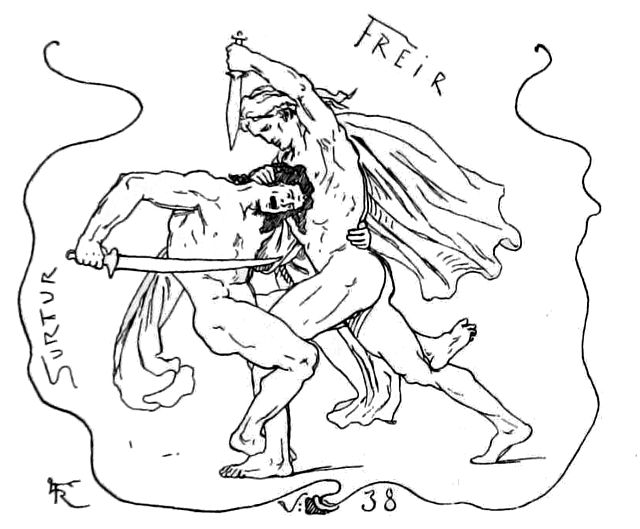In Norse mythology, Sinmara is a gýgr (giantess), usually considered a consort to the fiery jötunn Surtr, the lord of Muspelheim, but wife of Mimir. Sinmara is attested solely in the poem Fjölsvinnsmál, where she is mentioned alongside Surtr in one (emended) stanza, and described as keeper of the legendary weapon Lævateinn in a later passage. Assorted theories have been proposed about the etymology of her name, and her connection with other figures in Norse mythology.
Sinmara (1893) by Jenny Nyström
In Norse mythology, Surtr, also sometimes written Surt in English, is a jötunn. He is the guardian of Muspelheim which is along with Niflheim, the only two realms to exist before the beginning of time, and the greatest of the fire giants. Surtr is attested in the Poetic Edda, compiled in the 13th century from earlier traditional sources, and the Prose Edda, written in the 13th century by Snorri Sturluson. In both sources, Surtr is foretold as being a major figure during the events of Ragnarök; carrying his bright sword, he will go to battle against the Æsir, he will battle the major god Freyr, and afterward the flames that he brings forth will engulf the Earth.
The Giant with the Flaming Sword (1909) by John Charles Dollman
Surtr with the Flaming Sword (1882) by F. W. Heine, based on a plaster frieze designed by Friedrich Wilhelm Engelhard (1859)
Battle of the Doomed Gods (1882) by Friedrich Wilhelm Heine
The battle between Surtr and Freyr at Ragnarök, illustration (1895) by Lorenz Frølich





